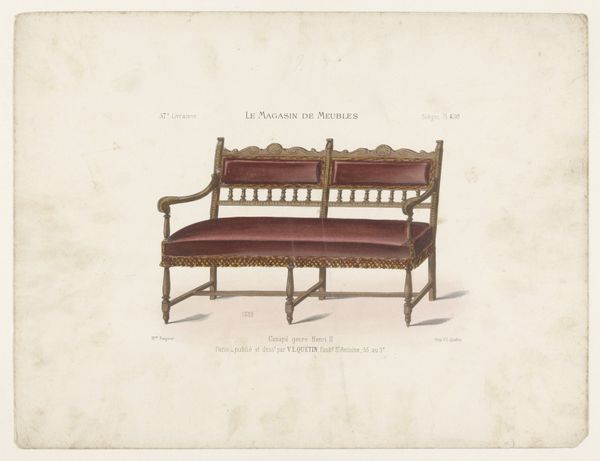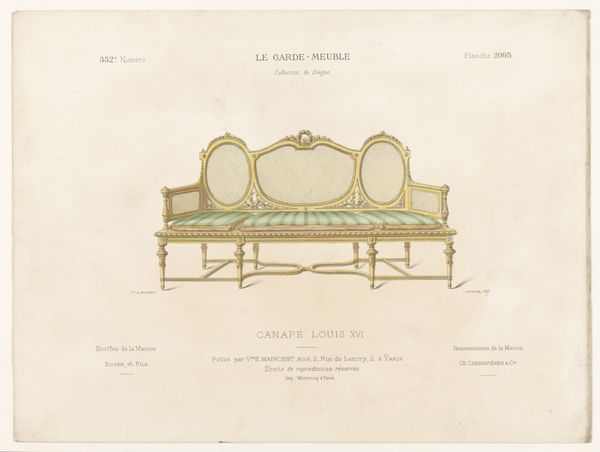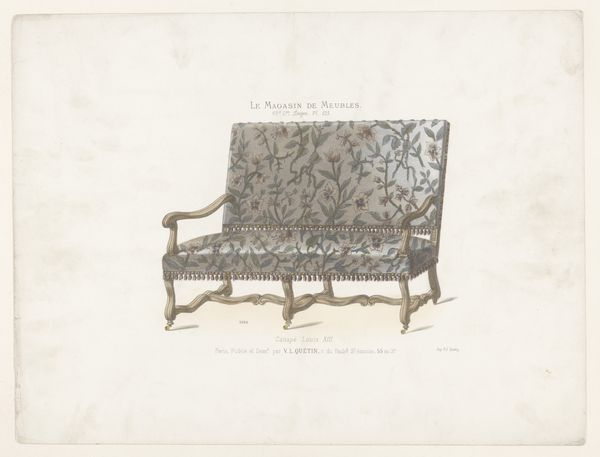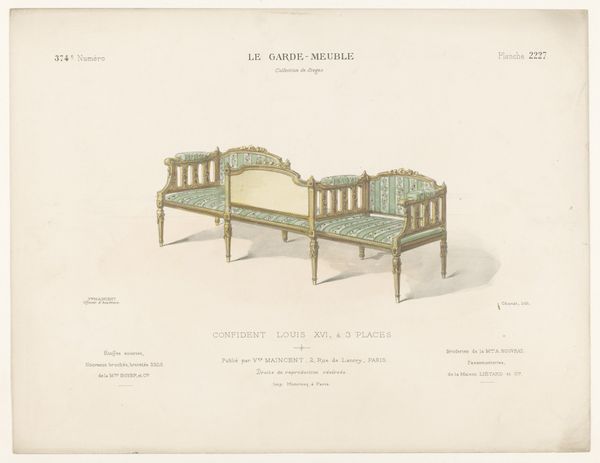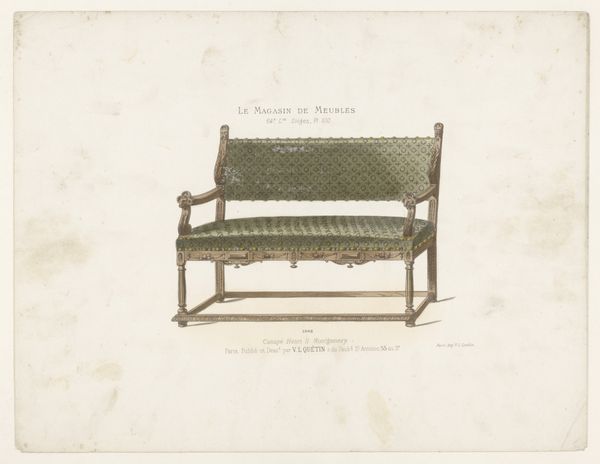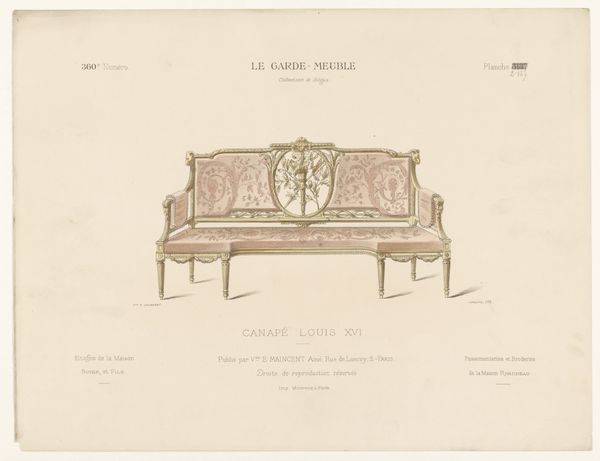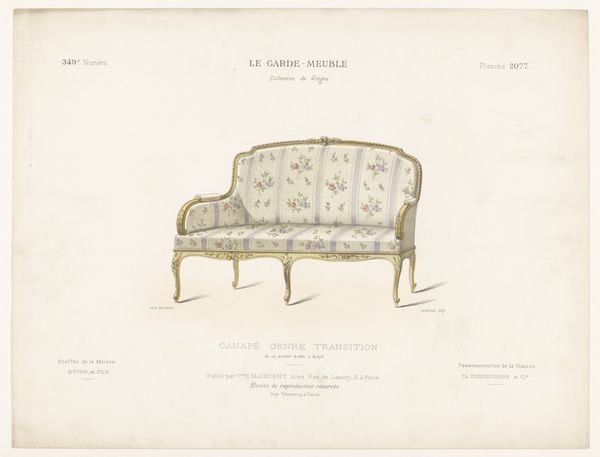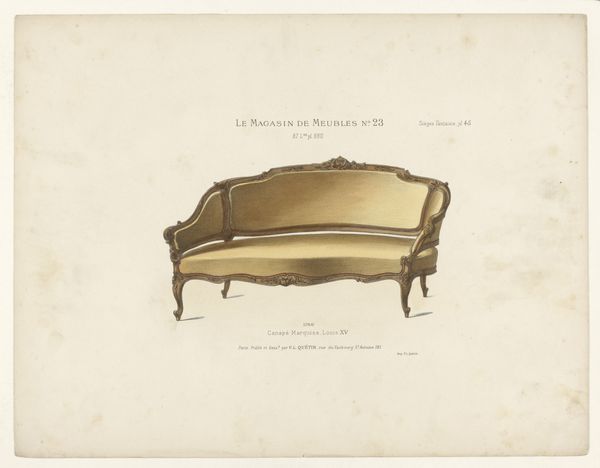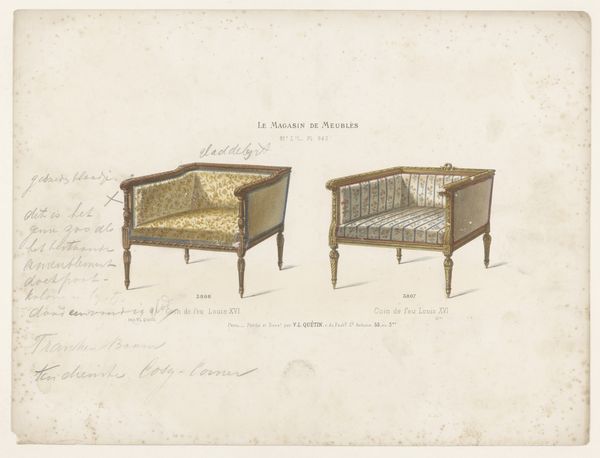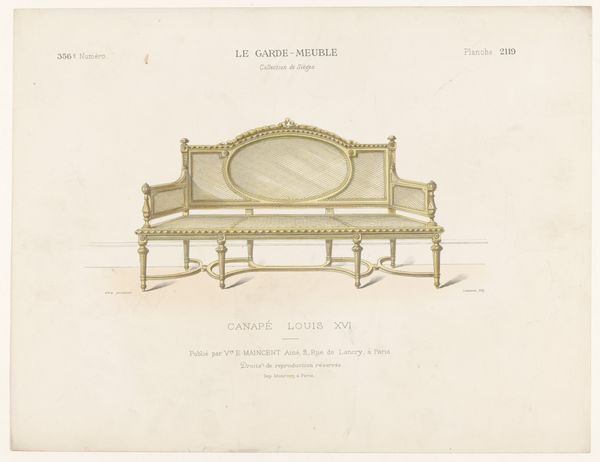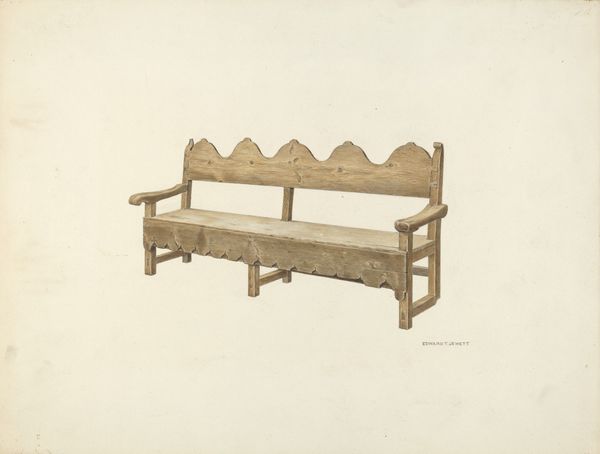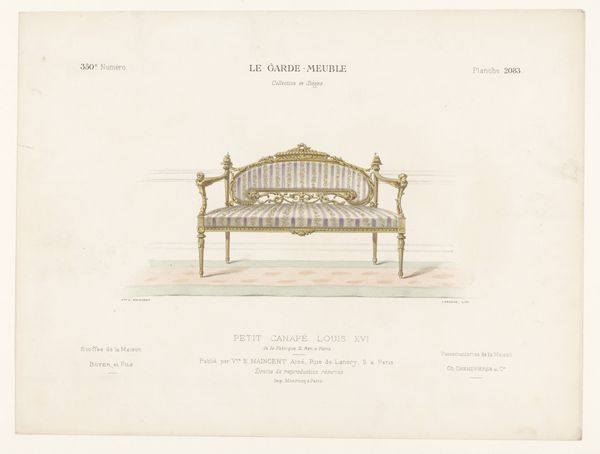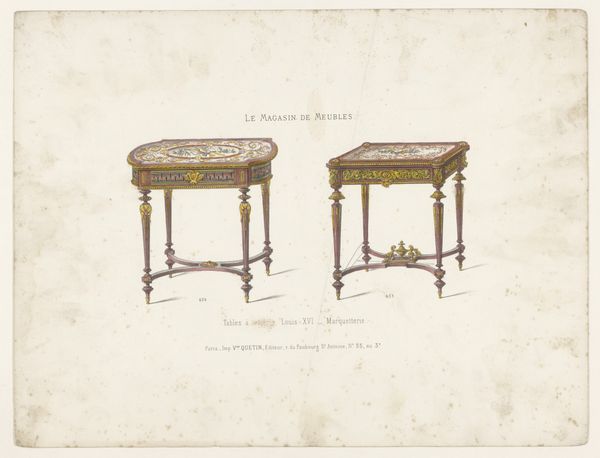
#
aged paper
#
toned paper
#
light pencil work
#
old engraving style
#
personal sketchbook
#
ink colored
#
sketchbook drawing
#
watercolour illustration
#
golden font
#
watercolor
Dimensions: height 272 mm, width 361 mm
Copyright: Rijks Museum: Open Domain
Curator: Immediately, I'm struck by the opulence of this seat, even in two-dimensional form. The dark fabric patterned with gold, the solidity of the frame… it speaks of luxury. Editor: Indeed. What we're looking at is a watercolor illustration of a "Bank," or bench, dating to 1878. The maker's name appears to be V.A. Quetin, of Paris. I’m interested in situating such a bench within a wider narrative of class and taste. Curator: Taste, absolutely! Consider the construction – the turned legs, the carved detailing along the back. These processes aren’t automated. There's a significant amount of skilled labor involved. I see it as a material expression of status. Editor: Exactly. Furniture like this would likely furnish spaces designed to enact a particular type of social power, signaling hierarchies of wealth. Who had access to these spaces, and whose labor made them possible? Were women involved, for example, in the tapestry, what opportunities would have been accessible to them at the time? Curator: It’s a gorgeous piece of work. The watercolour medium allows to represent the texture. Notice also the artist's hand evident in the aged paper, the use of watercolor to evoke the textures of the materials, even the variations in tone which bring out the form. It's about the act of representing and consuming a luxurious product. Editor: I think your pointing to the production value is important. Think about who this object was intended to appeal to, what was the advertisement and design trade and industry in the later part of the 19th century doing and enabling? Consider this drawing as an element within those wider discourses around display, ownership, aspiration. Curator: That really adds a deeper dimension. It shifts our understanding, and prompts me to see this illustration itself, less as just an image of an object, and more as a piece of that world of manufacture and sale. Editor: Precisely. It's a testament to how art can be a window into larger political, cultural, and social systems.
Comments
No comments
Be the first to comment and join the conversation on the ultimate creative platform.
